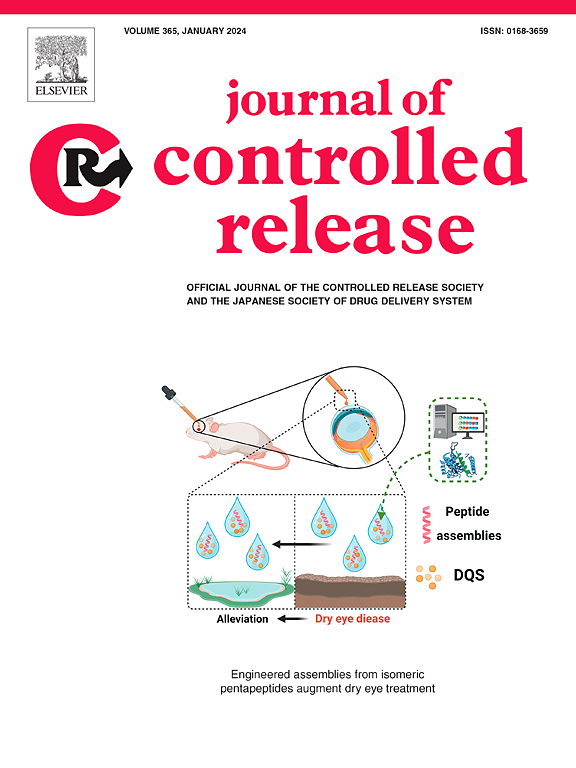表达抗菌肽的聚氨基糖苷纳米系统用于多阶段慢性伤口处理
IF 10.5
1区 医学
Q1 CHEMISTRY, MULTIDISCIPLINARY
引用次数: 0
摘要
由于病原微生物的定植和愈合级联的失调,慢性伤口难以愈合,需要新的治疗策略。本研究将抗菌肽LL37与阳离子聚氨基糖苷(SS-HPT)结合,构建了一个多功能纳米系统,构建了一个自我维持的“AMP工厂”,实现了伤口愈合的多阶段调节。通过细胞水平实验和免疫功能低下大鼠体内双模型(机械损伤和细菌感染)的验证表明,该系统具有独特的细胞内-细胞外双重杀灭病原体的能力,显著加快了伤口愈合过程。转录组学分析显示其机制涉及抑制促炎因子表达和激活组织修复途径的双重作用。组织学证据证实,该系统促进血管生成,提高再上皮率,并引导有序的胶原纤维沉积。该纳米系统结合了高效的AMP传递和综合治疗策略,在微生物清除、免疫微环境调节和组织基质重塑方面实现了三维协同,为慢性伤口治疗的范式转变提供了理论和技术基础。本文章由计算机程序翻译,如有差异,请以英文原文为准。


Polyaminoglycoside nanosystem expressing antimicrobial peptides for multistage chronic wound management
Chronic wounds are difficult to heal due to pathogenic microbial colonization and dysregulation of healing cascades, necessitating novel therapeutic strategies. This study developed a multifunctional nanosystem by integrating the antimicrobial peptide LL37 with cationic polyaminoglycoside (SS-HPT), constructing a self-sustaining "AMP factory” to achieve multi-stage modulation of the wound healing. Validation through cell-level experiments and in vivo dual models (mechanical injury and bacterial infection) in immunocompromised rats demonstrated the system's unique dual intracellular-extracellular pathogen-killing capability, significantly accelerating the wound healing process. Transcriptomic analysis revealed that its mechanism involves the dual effects of suppressing pro-inflammatory factor expression and activating tissue repair pathways. Histological evidence confirmed that the system promotes angiogenesis, enhances re-epithelialization rates, and guides orderly collagen fiber deposition. This nanosystem, combining efficient AMP delivery and integrated therapeutic strategies, achieves three-dimensional synergy in microbial clearance, immune microenvironment regulation, and tissue matrix remodeling, providing theoretical and technical foundations for a paradigm shift in chronic wound treatment.
求助全文
通过发布文献求助,成功后即可免费获取论文全文。
去求助
来源期刊

Journal of Controlled Release
医学-化学综合
CiteScore
18.50
自引率
5.60%
发文量
700
审稿时长
39 days
期刊介绍:
The Journal of Controlled Release (JCR) proudly serves as the Official Journal of the Controlled Release Society and the Japan Society of Drug Delivery System.
Dedicated to the broad field of delivery science and technology, JCR publishes high-quality research articles covering drug delivery systems and all facets of formulations. This includes the physicochemical and biological properties of drugs, design and characterization of dosage forms, release mechanisms, in vivo testing, and formulation research and development across pharmaceutical, diagnostic, agricultural, environmental, cosmetic, and food industries.
Priority is given to manuscripts that contribute to the fundamental understanding of principles or demonstrate the advantages of novel technologies in terms of safety and efficacy over current clinical standards. JCR strives to be a leading platform for advancements in delivery science and technology.
 求助内容:
求助内容: 应助结果提醒方式:
应助结果提醒方式:


